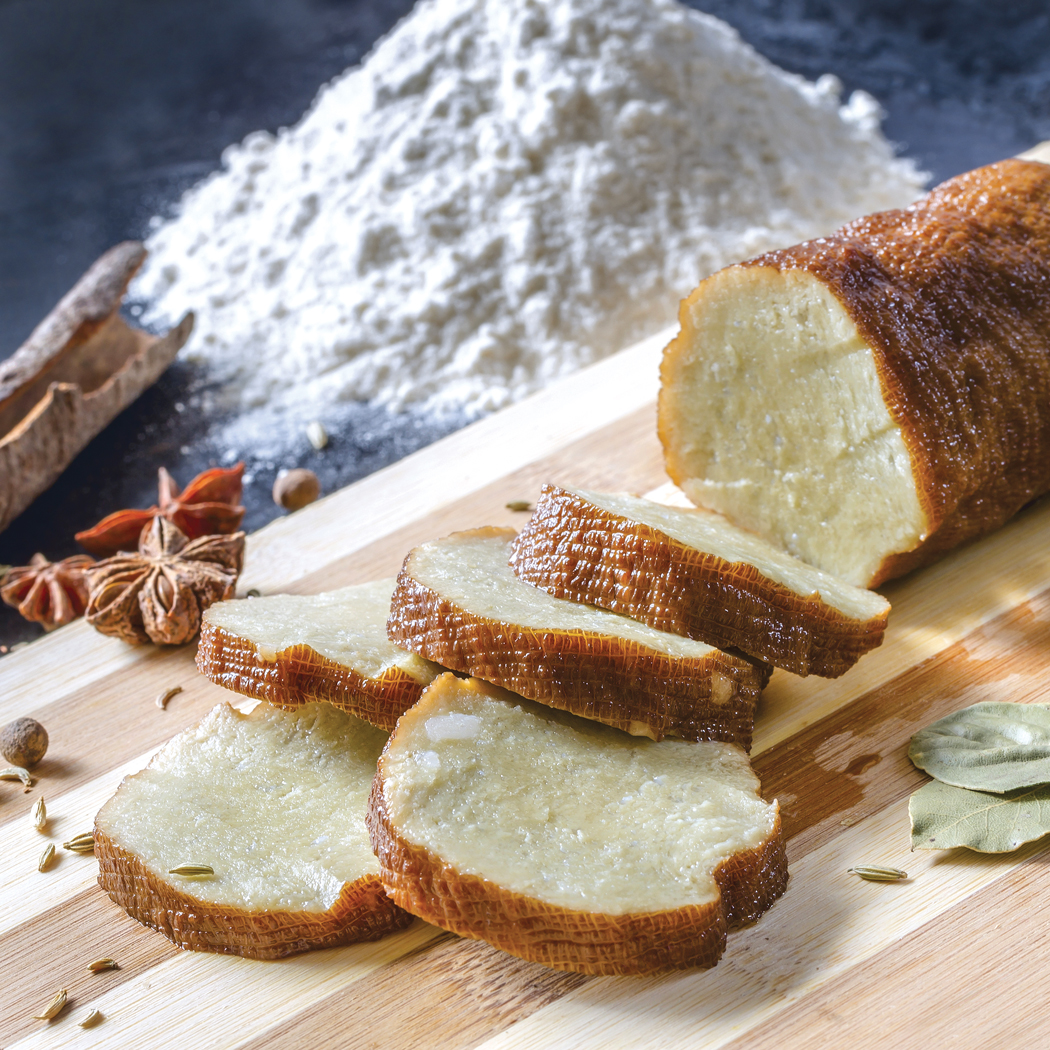Monk Meat
Seitan is a common vegetarian meat substitute made from gluten, the main protein in wheat. While fairly new to western palates, it has been used for centuries throughout Asia, especially among vegetarian cultures like Buddhist monks. Historically, the term “seitan” specifically referred to a Japanese dish made from wheat flour dough simmered in a broth of soy sauce, ginger, garlic and kombu (seaweed). Nowadays, “seitan” is often applied to any product made from extracted wheat gluten.
Elbow grease
Making seitan is a very labour-intensive process, involving continuous washing and kneading wheat flour dough until all the starch has been removed. Many home cooks make a shortcut version of seitan by reconstituting vital wheat gluten with liquid. Vital wheat gluten is extracted gluten in powder form, a common baking ingredient that’s readily available in supermarkets. Commercially prepared seitan is also available at natural food stores and Asian markets.
Mushroom meets chicken?
Seitan is popular among vegetarians and vegans for its chewy, meaty texture. It’s often the main ingredient in vegan beef jerky. Still, it’s not completely the same as meat and does take some getting used to, says Kevin Kao, manager of Loma House. “It’s kind of a foreign texture to westernized palates,” he says. “If you’ve ever had a shiitake mushroom, it’s kind of close to that texture.”
Neutral palate
Much like tofu, seitan is very neutral in flavour – so you can flavour it however you want. Maya Paramitha, manager of Padmanadi Vegetarian Restaurant, notes that this is why it’s such a versatile ingredient. “It acts almost like a chicken breast,” she says. “It absorbs all the flavours that you put it in.”
